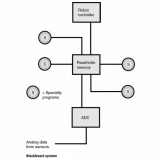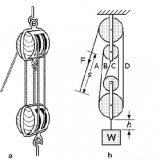Linkages – Tchebicheff Straight Line 51015
Tchebicheff’s straight-line generator, (Chebyshev linkage) can also describe a horizontal line. The Chebyshev linkage is a mechanical linkage that converts rotational motion to approximate straight-line motion.
It was invented by the 19th century mathematician Pafnuty Chebyshev who studied theoretical problems in kinematic mechanisms. One of the problems was the construction of a linkage that converts a rotary motion into an approximate straight line motion. This was also studied by James Watt in his improvements to the steam engine.
The Chebyshev approximate straight line mechanism is also a four bar linkage mechanism that is both historically important and also of practical importance. After the invention of steam engine and straight line mechanism by Watt a range of straight line mechanisms were designed. Chebyshev’s mechanism is the first mechanism to be designed after Watt’s linkage by a Russian Mathematician Pafnuty Chebyshev. This mechanism was invariable used for linear guidance of the piston and valves.
Like the Watt’s Linkage Chebyshev’s straight line mechanism is simple in construction. It is a double rocker and the mid point of the coupler is the point tracing the approximate linear path. Chebyshev’s mechanism has two critical advantages over Watt’s linkage, viz, a very long segment of the path of the coupler midpoint is approximately linear and both fixed points of the linkage are on the same side of the linear path, which in case of Watt’s linkage are on opposite sides. The required proportions of the length of members of the linkage are a = 1, b = 2.5 and c = 2.
Simulation of Tchebicheff Straight Line
Warning : Flash Animation May not Work on Some Browsers and Mobile Platforms !
Links
Youtube Video: http://youtu.be/xPVcL0fMBCk





